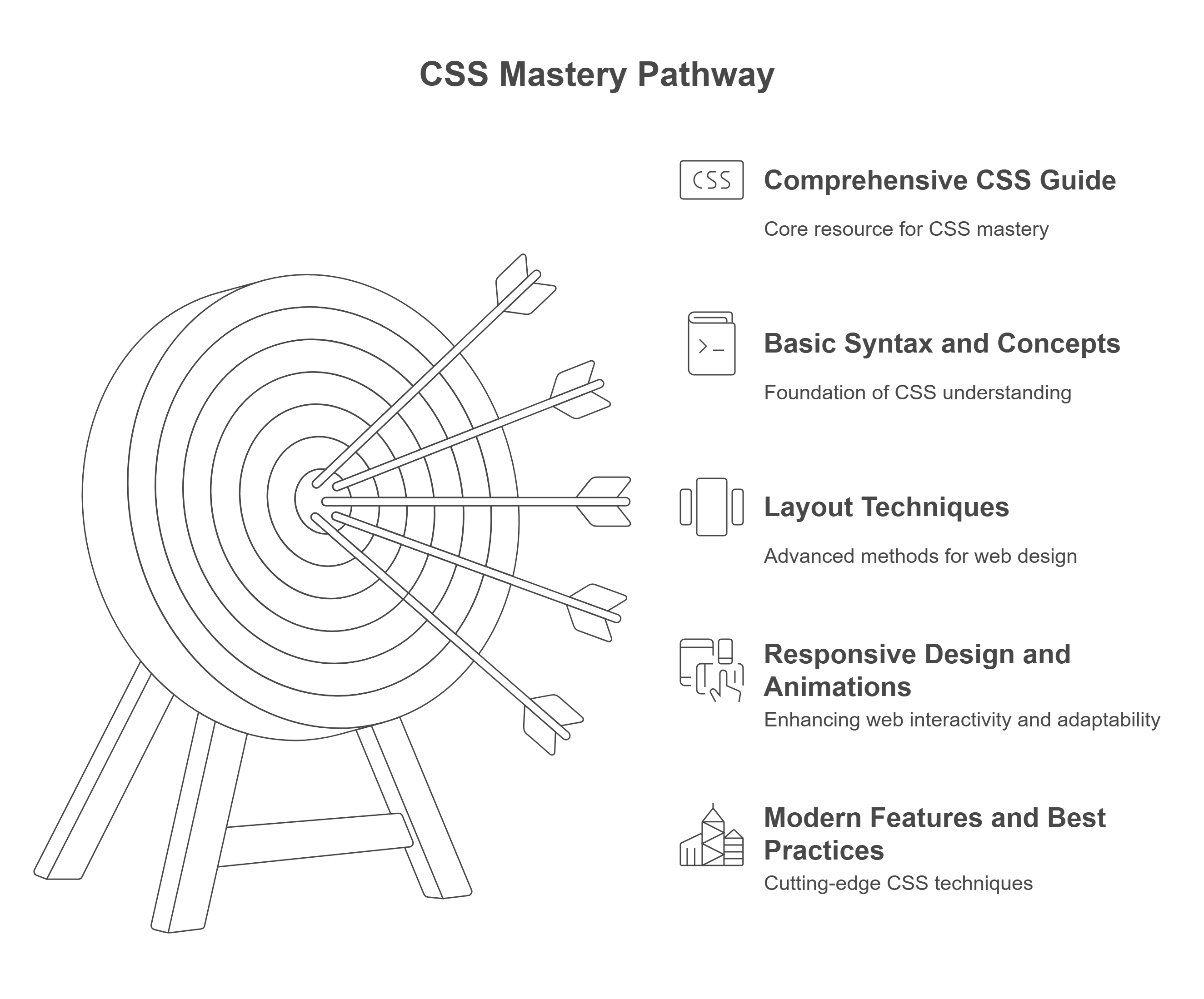Welcome to the CSS Tutorial
Road map

What is HTML & CSS?
HTML and CSS are the **building blocks** of every website! While **HTML** structures the content, **CSS** makes it look beautiful. 🎨
🏗️ Imagine Building a House
Think of a **house construction**:
- 🏠 **HTML (Structure)** - The walls, doors, and windows.
- 🎨 **CSS (Design)** - The paint, decorations, and furniture.
Without HTML, there's **no house**. Without CSS, the house looks **plain and boring**!
1️⃣ What is HTML?
HTML (**HyperText Markup Language**) is used to **structure** web pages. It defines headings, paragraphs, images, links, and buttons.
<h1>Hello, World!</h1>
<p>This is a paragraph in HTML.</p>
<img src="image.jpg" alt="An image">
2️⃣ What is CSS?
CSS (**Cascading Style Sheets**) is used to **style** web pages, controlling colors, fonts, layouts, and animations.
/* CSS */
h1 {
color: blue;
font-size: 24px;
}
p {
font-family: Arial, sans-serif;
text-align: center;
}
3️⃣ Key Differences: HTML vs. CSS
| Feature | HTML | CSS |
|---|---|---|
| Purpose | Defines the structure of a webpage. | Styles and beautifies the webpage. |
| Function | Creates headings, paragraphs, images, etc. | Controls colors, fonts, layout, and animations. |
| Example Code | <p>Hello!</p> |
p { color: red; } |
| Importance | Without HTML, there's **no content**. | Without CSS, content looks **plain and boring**. |
4️⃣ Importance of HTML
HTML is **essential** because:
- 💡 It **creates the structure** of every webpage.
- 🔗 It **connects** links, images, and forms.
- 📱 It works on **all devices** and browsers.
5️⃣ Which One is More Important to Learn First? 🤔
| Learning Stage | What to Learn? | Why? |
|---|---|---|
| Beginner | HTML | Start with structure before adding design. |
| Intermediate | CSS | Style and enhance the webpage's look. |
| Advanced | CSS Animations & Flexbox | Make pages interactive and responsive. |
Frequently Asked Questions (Real-World CSS)
How can I create a responsive design using CSS?
Use media queries to apply different styles based on screen size. Flexbox and Grid Layout are also essential for responsive designs.
What is the difference between relative, absolute, fixed, and sticky positioning?
Relative: Positioned relative to its normal position.
Absolute: Positioned relative to the nearest positioned ancestor.
Fixed: Stays fixed relative to the viewport.
Sticky: Behaves like relative until a certain scroll point, then acts as fixed.
How do I center a div in CSS?
Use display: flex; with justify-content: center; and align-items: center; for centering horizontally and vertically.
How can I make text wrap inside a container?
Use word-wrap: break-word; or overflow-wrap: break-word; to ensure text breaks properly.
How can I create a hover effect in CSS?
Use the :hover pseudo-class to change styles when the user hovers over an element.
What is the difference between rem and em units?
em: Relative to the font size of the parent element.
rem: Relative to the root element's font size.
How do I add a background image that covers the entire screen?
Use background-size: cover; along with background-position: center;.
How can I create an animated button in CSS?
Use the transition property to animate properties like color, background, and transform.
What is the difference between visibility: hidden and display: none?
visibility: hidden: Hides the element but keeps its space occupied.
display: none: Removes the element from the document flow entirely.
How do I create a gradient background in CSS?
Use background: linear-gradient(direction, color1, color2); for smooth color transitions.
How can I make a div stick to the top while scrolling?
Use position: sticky; with top: 0;.
What is the difference between flexbox and grid?
Flexbox: Best for one-dimensional layouts (row or column).
Grid: Best for two-dimensional layouts (both rows and columns).
How do I make a button with rounded corners?
Use border-radius: 10px; or any preferred value.
How can I change the cursor style?
Use the cursor property, e.g., cursor: pointer; for clickable elements.
How do I apply a shadow to text or elements?
Use text-shadow for text and box-shadow for elements.
How can I hide an element but still keep it accessible?
Use opacity: 0; or move it off-screen using position: absolute; left: -9999px;.
How can I create a smooth scrolling effect?
Use scroll-behavior: smooth; on the html element.
How do I create a responsive navigation bar?
Use display: flex; with media queries to adjust the layout for different screen sizes.
How can I make a full-screen overlay in CSS?
Use position: fixed;, top: 0;, left: 0;, width: 100%;, and height: 100%;.
Conclusion
Understanding these real-world CSS questions will help you create modern, responsive, and interactive websites effectively.
Final Thought 💡
HTML and CSS work **together**—HTML is like the **bones**, and CSS is like the **skin and clothes**. Learning **both** makes you a **great web designer!** 🚀